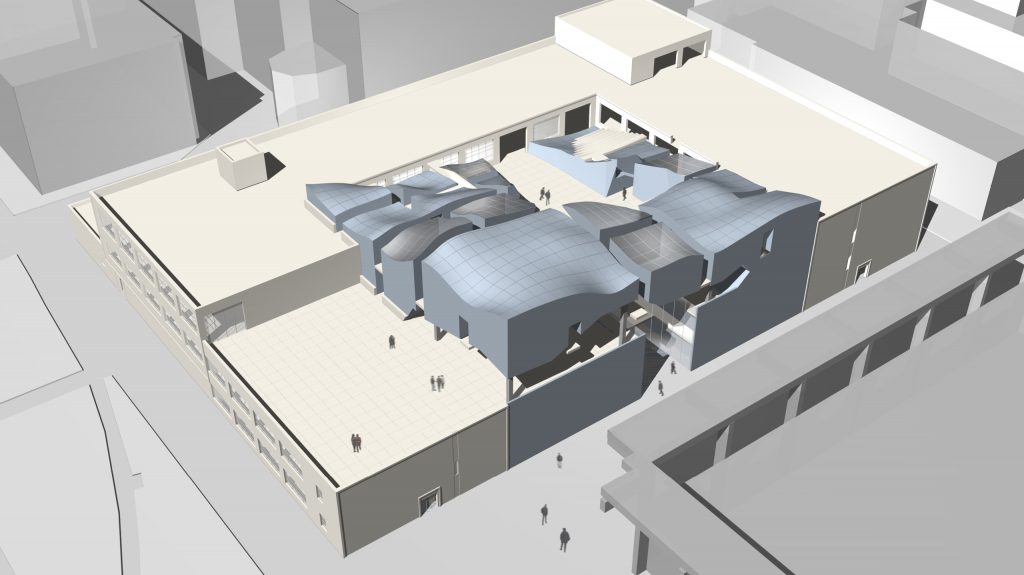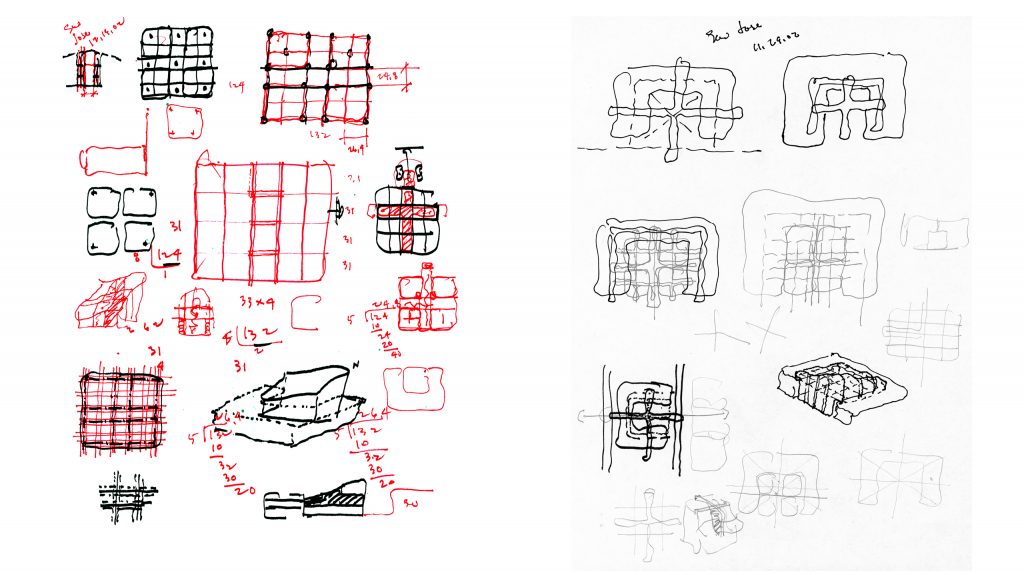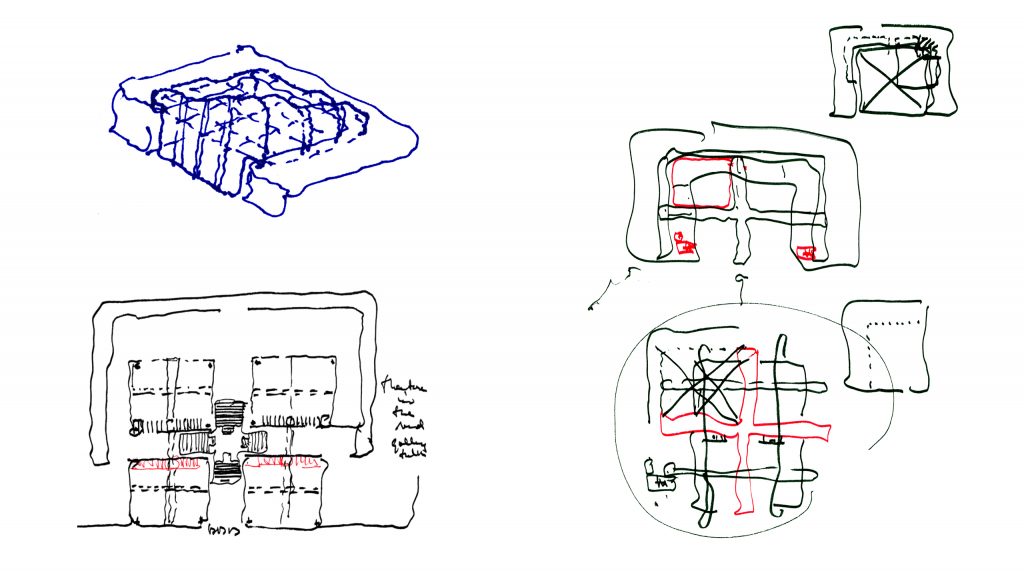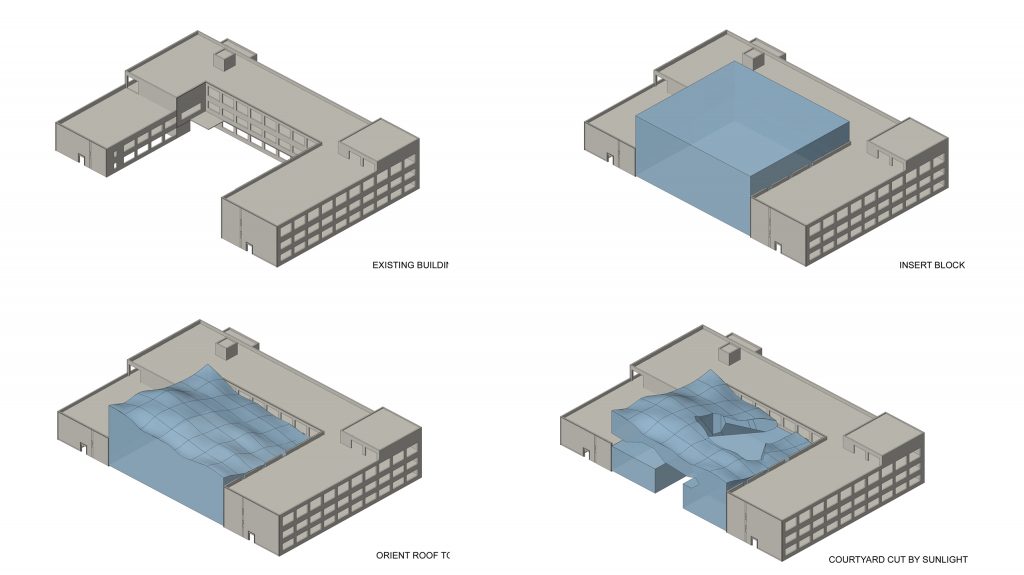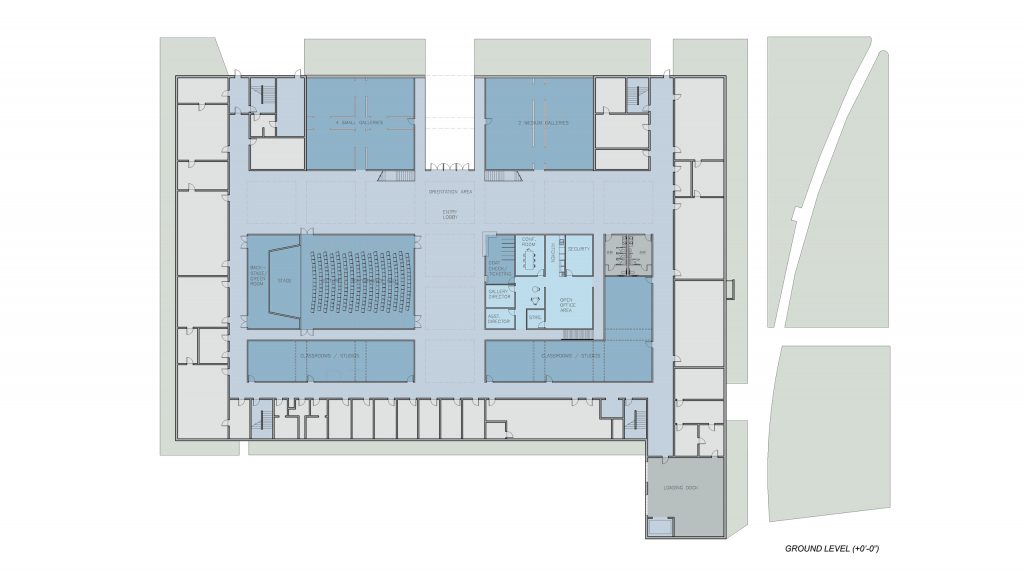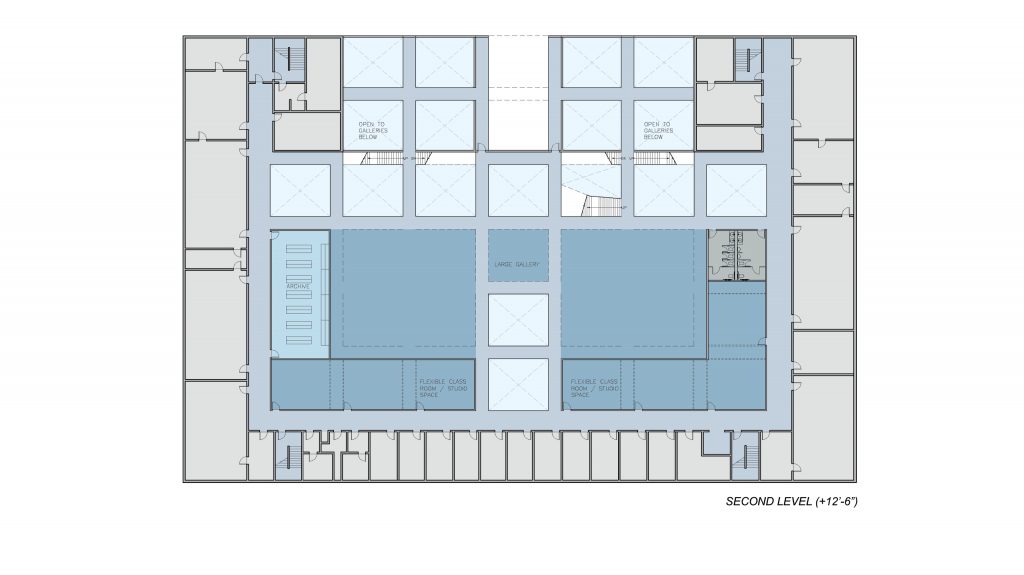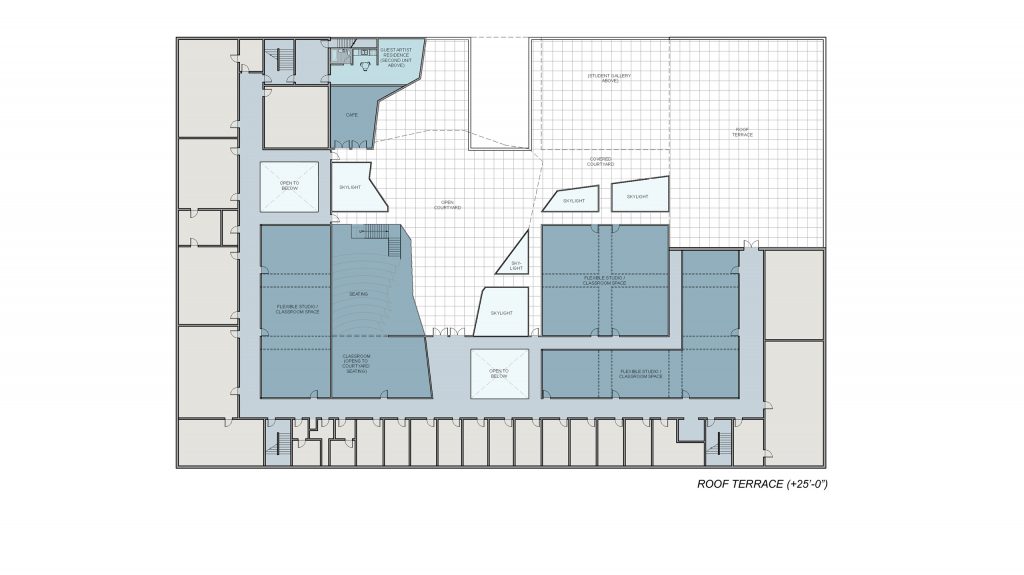Location
San Jose, California
Program
Museum
Size
2002
Key Staff
Eric McNevin, Jose Herrasti
The design strategy for the San Jose State Museum of Art and Design is to uncover the organizational strengths of the existing building and simultaneously suggest new prospects for public participation, exhibition and performance space.
The courtyard of the school is filled with a five block by five block grid. The center row of blocks in either direction connects to the school’s existing circulation system to create one cohesive system between the new and the old. The new entry opens into a double height promenade used for student gatherings and exhibitions, art display, performances, and as yet unnamed art of all sorts. The corner blocks become galleries, administration, classrooms, lecture halls, and studios. The gallery spaces will be open and flexible. They can be used as large open spaces, or the can divided both horizontally and vertically by the module system.
The large gallery is located in the center of the space on the mezzanine level. A series of bridges extend from the gallery floor to look down into the smaller galleries on the ground floor along the north façade of the building. The module system of the museum extends into the school and creates flexible studio spaces which can be combined or divided to host a variety of activities.
The sloping roof of the building is shaped by the path of the sun at various times of the year. The surface of the roof provides the optimum sun angles for thin-film photovoltaic cells to collect energy to help power the building. The modules over the entry promenade become skylights to bring natural light into the non-gallery spaces of the museum.
The direct rays of the sun carve into the roof of the building creating a terrace and an opening in the façade which allows sunlight to enter into the pedestrian walkway to the north of the building. Utilizing sun angles from various times of the year create areas that are exposed to the direct sun for warmth in the winter, and provide areas of shade in the summer.
